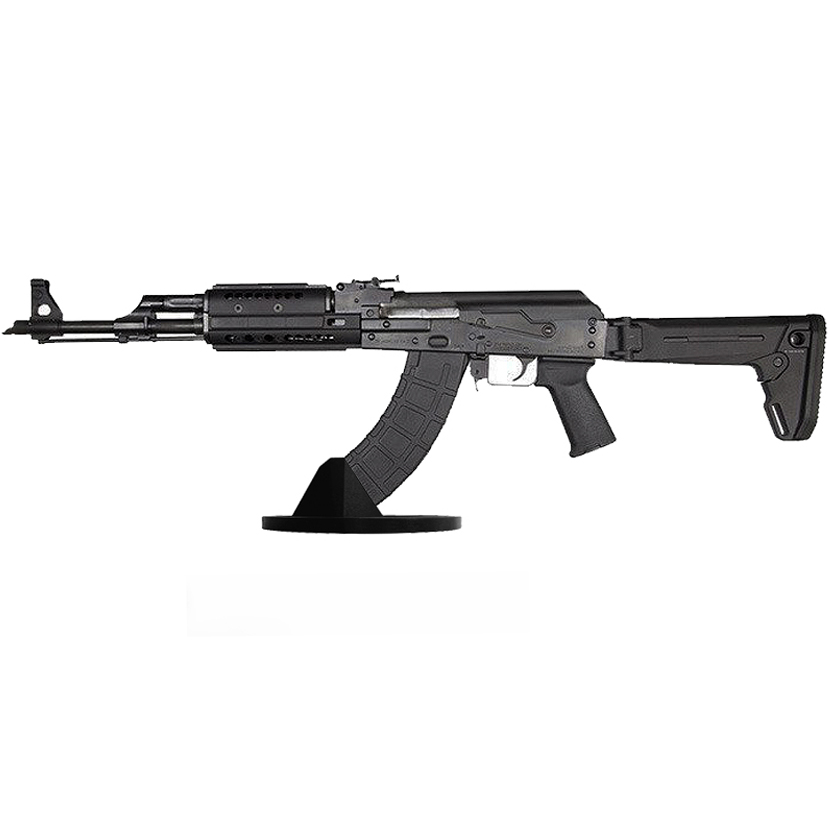
Categories:
The enduring popularity of AK-47 clones can be attributed to a combination of historical, practical, and cultural factors that have cemented these guns as staples in the global arms market. Understanding these contributing elements provides insight into why AK-47 clones maintain their appeal and widespread usage today.
Historically, the original AK-47, designed by Mikhail Kalashnikov in 1947, earned a reputation for reliability under harsh conditions. This legacy has been inherited by its clones. These variants often replicate the ruggedness and simplicity that made the original so reliable in diverse environments—from arid deserts to humid jungles. This robustness ensures that even less meticulously maintained weapons continue to function effectively, a trait highly valued by both military forces and civilian users.
From a practical standpoint, the ease of manufacturing and relatively low production costs have significantly contributed to the proliferation of AK-47 clones. Many countries have produced their own versions using locally available materials and labor. Consequently, these guns are accessible at lower price points compared to other modern rifles with similar capabilities. The affordability factor makes them particularly attractive for budget-conscious buyers who do not wish to compromise on performance or reliability.
Another significant factor is the ubiquity of ammunition compatible with AK-47 clones—most notably the 7.62x39mm cartridge. This ammunition is widely available globally due to decades of mass production for military purposes. The assurance that one can easily procure ammo adds another layer of practicality for users ranging from professional soldiers to recreational shooters.
Culturally, AK-47s and their clones have become iconic symbols featured prominently in media—from movies and video games to news reports on conflicts around the world. This pervasive presence has ingrained them deeply into public consciousness as symbols of power and resistance.
In sum, it is this blend of historical legacy, practical advantages like cost-effectiveness and reliability, widespread availability of compatible ammunition, and strong cultural symbolism that collectively drive the continued popularity of AK-47 clones today.
The Romanian WASR-10 stands as one of the most popular and widely recognized AK-47 clones available today. Originating from Romania, this gun has carved out a significant niche in the global market due to its reliability, affordability, and historical lineage. Manufactured by Cugir Arms Factory, the WASR-10 is based on the design of the original AKM (Avtomat Kalashnikova Modernizirovanniy), which itself is an improved version of Mikhail Kalashnikov’s seminal AK-47.
The rifle was initially produced for commercial export to meet the increasing demand for civilian versions of military-style rifles in markets such as North America. Over time, it has garnered a reputation as a robust and dependable gun suitable for various applications ranging from recreational shooting to home defense. One of the key attributes that make the WASR-10 so appealing is its adherence to simplicity and durability—hallmarks of Kalashnikov’s original design.
The rifle features a stamped receiver made from sheet metal, contributing to its lightweight yet sturdy construction. This simplicity extends to its internal mechanisms, making it relatively easy to maintain and repair even under less-than-ideal conditions. In terms of performance, the WASR-10 generally exhibits reliable functionality with satisfactory accuracy at medium ranges. It typically uses standard 7.62x39mm ammunition, which is both affordable and widely available.
The rifle comes equipped with wooden furniture that gives it a classic appearance reminiscent of Cold War-era weaponry; however, many owners choose to customize their rifles with aftermarket parts such as polymer stocks or tactical rails. While earlier models faced criticism over quality control issues—such as canted sights or rough finishes—more recent iterations have shown marked improvements thanks to better manufacturing practices and stricter inspections before exportation.
The affordability factor cannot be overstated when discussing the popularity of the WASR-10. It offers an accessible entry point into owning an AK-style rifle without compromising on essential features or reliability. This balance between cost-effectiveness and performance makes it especially attractive for first-time buyers or those looking to expand their collection without breaking the bank.
The Bulgarian Arsenal SAM7 stands out as one of the most respected and sought-after AK-47 clones available in today’s market. Manufactured by Arsenal Inc., a company with a long-standing history rooted in Bulgaria, the SAM7 is revered for its exceptional craftsmanship, robust construction, and reliable performance.
Arsenal Inc. traces its lineage back to the Kazanlak-based arsenal established in 1878, which has been producing guns and military equipment for over a century. This storied heritage lends an air of authenticity and expertise to their modern offerings. The SAM7 series exemplifies this rich tradition, embodying the design principles that have made the AK-47 a legendary gun while incorporating contemporary manufacturing techniques and materials.
The heart of the Bulgarian Arsenal SAM7 is its milled receiver, which sets it apart from many other AK variants that typically feature stamped receivers. A milled receiver is crafted from a solid block of steel, providing increased rigidity and durability compared to its stamped counterpart. This results in enhanced accuracy and longevity, making it a preferred choice for those seeking a high-performance rifle capable of withstanding rigorous use.
In addition to its robust construction, the SAM7 boasts several features that appeal to both enthusiasts and professional users alike. It retains the classic look and feel of an original AK-47 while integrating modern enhancements such as improved ergonomics, better sights, and compatibility with various accessories. The rifle’s chrome-lined barrel ensures corrosion resistance and extended barrel life—critical aspects for maintaining reliability over years of use.
Moreover, Arsenal Inc.’s stringent quality control processes ensure each SAM7 rifle meets exacting standards before leaving their facility. This commitment to excellence has earned them a loyal following among civilian shooters as well as law enforcement agencies worldwide.
In essence, the Bulgarian Arsenal SAM7 represents an ideal blend of historical authenticity and modern engineering prowess. Its combination of meticulous craftsmanship, durable construction, and reliable performance makes it one of the most popular AK-47 clones available today—a testament to both its heritage and innovation in gun design.
The Russian Saiga series stands as one of the most noteworthy and popular AK-47 clones available today, capturing the essence of the original Kalashnikov design while incorporating modern features that appeal to a wide range of enthusiasts. Manufactured by Izhmash (now part of Kalashnikov Concern), the Saiga rifles are a direct descendant of the classic AK-47, known for their reliability, durability, and adaptability.
Named after the Saiga antelope native to Russia and Central Asia, these rifles were initially designed for civilian use, primarily targeting hunters and sports shooters. The Saiga series includes a variety of configurations, catering to different calibers such as 7.62x39mm, .223 Remington/5.56 NATO, 5.45x39mm, and even .308 Winchester. This versatility makes them suitable for various applications ranging from hunting medium-sized game to precision target shooting.
One defining feature of the Saiga series is its adherence to traditional AK-47 mechanisms while integrating compliance with international export regulations. This means that while they retain the robust gas-operated rotating bolt system that grants AK platforms their legendary reliability under adverse conditions, they also come equipped with features such as sporterized stocks and non-threaded barrels in some models to meet import requirements.
Moreover, many guns enthusiasts appreciate the modularity offered by the Saiga rifles. They can be easily customized with aftermarket parts including handguards, stocks, optics mounts, and muzzle devices. Some users even convert their sporterized models back into more traditional military-style configurations through available kits—a testament to their flexibility.
Despite facing import restrictions in certain markets over recent years due to geopolitical tensions between Russia and other countries like the United States, existing models continue to hold significant value among collectors and practical shooters alike. The Russian Saiga series not only preserves but also enhances the legacy of Mikhail Kalashnikov’s iconic design by offering modern refinements without sacrificing reliability or performance.
In conclusion, whether sought after for their historical pedigree or practical utility in contemporary shooting sports and hunting scenarios—Saiga rifles remain a cornerstone among AK-47 clones globally recognized for their robust build quality and versatile applications.
The Serbian Zastava M70 stands as one of the most renowned and respected AK-47 clones available in today’s market. Originating from the Zastava Arms factory in Serbia, this gun embodies both the historical legacy and modern engineering advancements that make it a standout choice for enthusiasts and professionals alike.
The development of the Zastava M70 dates back to the early 1970s when Yugoslavia sought to produce its own version of the ubiquitous Soviet AK-47. The result was a robust and reliable rifle that retained many key features of its predecessor while incorporating unique adaptations tailored to Yugoslav military requirements. One notable difference is the grenade-launching capability integrated into certain models, a feature absent in most other AK variants.
Constructed with high-quality materials, including a cold hammer-forged barrel, the M70 ensures durability and longevity even under harsh conditions. This manufacturing process not only enhances accuracy but also extends the life span of the barrel, making it a preferred choice for those seeking reliability over extended use. Another distinguishing characteristic is its heavier receiver, often milled from steel rather than stamped, which contributes to its sturdiness and reduced recoil.
Ergonomically, the Zastava M70 offers several enhancements over traditional AK designs. It typically features an adjustable gas system that allows users to fine-tune performance based on ammunition type and environmental conditions. Additionally, many modern iterations come equipped with improved polymer furniture options that reduce weight while maintaining structural integrity.
In terms of performance, users appreciate the M70’s ability to deliver consistent accuracy and dependability across various scenarios—from sport shooting to tactical applications. Its reputation is further bolstered by positive reviews from civilian owners as well as endorsements from military forces worldwide who have relied on this rifle in diverse operational theaters.
Ultimately, what sets the Serbian Zastava M70 apart is its blend of historical significance and contemporary improvements—making it not just an AK-47 clone but a distinguished gun in its own right. For those looking for a versatile yet rugged weapon with a proven track record, this Serbian masterpiece remains an exemplary choice within today’s crowded marketplace.
When evaluating the most popular AK-47 clones on the market today, it is crucial to consider both performance and price. Performance metrics typically include reliability, accuracy, ergonomics, and build quality. Meanwhile, price considerations often involve not just the initial cost but also long-term value in terms of maintenance and available aftermarket modifications.
One standout in terms of performance is the Zastava ZPAP M70. Manufactured in Serbia, this clone is renowned for its robust build quality and reliability under harsh conditions. The inclusion of a bulged trunnion and chrome-lined barrel enhances its durability and longevity. Priced around $1,000 to $1,200, it falls into the mid-to-high range but offers exceptional value for serious enthusiasts seeking a balance between cost and performance.
On the more affordable end of the spectrum is the PSAK-47 from Palmetto State Armory. This American-made clone has gained significant traction due to its competitive pricing—usually between $700 to $800—while still offering reliable performance. Although it may not boast all the premium features found in higher-end models like chrome-lined barrels or reinforced trunnions, it remains a solid choice for budget-conscious buyers looking for a dependable gun.
Another notable option is the WASR-10 from Romania’s Cugir Factory. Known for its ruggedness and no-frills design, this model excels in reliability even under adverse conditions. Priced typically around $800 to $900, it strikes an excellent balance between affordability and ruggedness without sacrificing too much on performance metrics like accuracy or build quality.
In comparing these models head-to-head, one finds that while high-end options offer superior materials and construction methods that can significantly impact their longevity and reliability under stress, mid-range options provide commendable performance at a more accessible price point. Ultimately, your choice will hinge on your specific needs—whether you prioritize advanced features or seek a cost-effective yet reliable solution for recreational shooting or self-defense purposes.
Understanding these nuances allows prospective buyers to make informed decisions tailored to their individual requirements while ensuring they get maximum value out of their investment in an AK-47 clone.
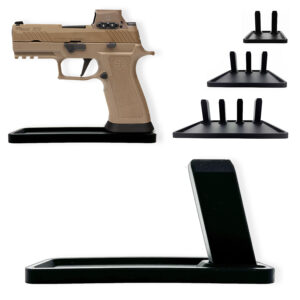
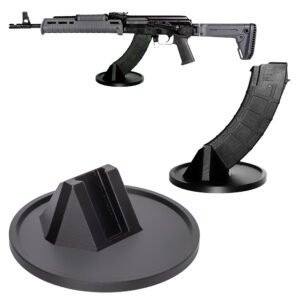

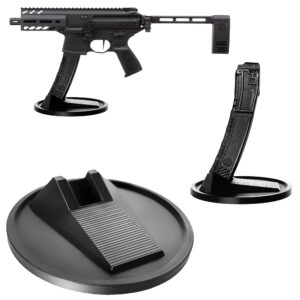
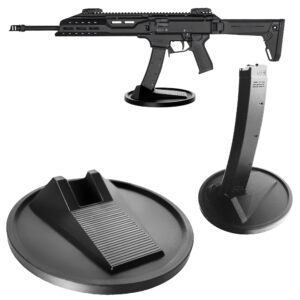


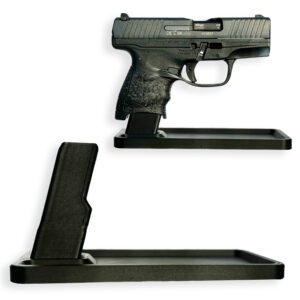
Colt
Colt M4 Carbine
Colt LE6920
Colt AR-15 A4
Daniel Defense
DDM4 V7
DDM4 V9
DDM4 V11
DDM4 ISR (Integrally Suppressed Rifle)
Smith & Wesson (S&W)
M&P15 Sport II
M&P15 Tactical
M&P15T
Bravo Company Manufacturing (BCM)
BCM Recce-16
BCM Recce-14
BCM MCMR Series
Aero Precision
M4E1 Series
AC-15
AR15 Pistol (Various Configurations)
Ruger
Ruger AR-556
Ruger SR-556
Ruger AR-556 MPR (Multi-Purpose Rifle)
Springfield Armory
Saint Victor
Saint Edge
Saint AR-15
PSA (Palmetto State Armory)
PSA PA-15
PSA AR-V
PSA Jakl (AR Pistol)
FN America
FN 15 Tactical Carbine
FN 15 Patrol
FN 15 DMR
Wilson Combat
Recon Tactical
Super Sniper
Protector Carbine
SIG Sauer
SIG M400 Tread
SIG M400 Elite
SIG M400 SDI
LWRC International
IC DI (Direct Impingement)
IC SPR
IC A5
Bushmaster Guns
XM-15 QRC
Bushmaster MOE
XM-15 Patrolman
Rock River Arms
LAR-15 Entry Tactical
LAR-15 Predator
LAR-15 Elite Comp
Stag Arms
Stag 15 Tactical
Stag 15L (Left-Handed Models)
Stag 15 Valkyrie
Noveske Rifleworks
Noveske Gen 4 N4
Noveske Space Invader (AR Pistol)
Noveske Recon
Anderson Manufacturing
AM-15 Optic Ready
AM-15 M4 Carbine
AM-15 Precision Rifle
Adams Arms
AA-15 Piston Rifle
P2 AARS (Adams Arms Rifle Series)
Black Rain Ordnance
SPEC15 Series
BRO Predator
Fallout 15
Diamondback Guns
DB15 Series
DB15CCMLB
DB15EB
Del-Ton Inc.
DTI-15
Del-Ton Echo 316H
Sierra 316M
Windham Weaponry
Windham SRC
Windham VEX-SS
Windham RMCS-4 (Caliber Conversion System)
Christensen Arms
CA-15 G2
CA-15 Recon
CA-15 Titanium Edition
Patriot Ordnance Factory (POF-USA)
Renegade Plus
P415 Edge
Revolution DI
LaRue Tactical
PredatAR
OBR (Optimized Battle Rifle)
LaRue Stealth 2.0
Battle Arms Development
Workhorse Patrol Carbine
BAD556-LW (Lightweight)
Authority Elite Rifle
Faxon Guns
Ascent AR-15
FX-19 (AR Pistol)
Streamline Ultralight Series
KE Arms
KE-15 SLT (Super Lightweight Tactical)
KE-15 Scout Carbine
Primary Weapons Systems (PWS)
MK1 MOD 2-M
MK116 PRO
MK107 (Piston AR Pistol)
ZEV Technologies
ZEV Core Elite Rifle
ZEV AR15 Billet Rifles
Franklin Armory
BFSIII AR-C1
Militia Model
F17-L (Chambered in .17 WSM)
Seekins Precision
SP15 DMR
NX15 Skeletonized Rifle
Havak Bravo
Aero Precision (Additional Models)
EPC-9 (Pistol Caliber ARs)
VG6 AR Rifles
Barrett Guns
REC7 DI
REC7 Gen II
CMMG
MK4 RCE
Resolute 300
Banshee (AR Pistol)
DPMS Panther Arms
Panther Oracle
Panther LR-308
H&K (Heckler & Koch)
HK MR556A1
HK416 (Military Variant)
Rock Island Armory (Armscor)
VR-80 Tactical AR (Shotgun AR Platform)
Troy Industries
Troy SPC-A3
Troy PAR (Pump Action AR)
Wilson Tactical
Tactical Recon AR
Protector Series
F1 Guns
FDR-15 Skeletonized Rifle
BDRx-15 Series
Juggernaut Tactical
JT-15
JT-10 Precision Rifle
AeroSurplus
Surplus AR-15 Rifles (Budget Models)
Thunder Tactical
AR-15 Basic Carbine
Tactical Builder Sets
Radical Guns
RF-15
Forged AR-Series
Dark Storm Industries
DS-15 Featureless Rifles
DS-10 Typhoon
DRD Tactical
Paratus
Aptus AR Rifles
Bear Creek Arsenal
BCA-15
AR Complete Upper Builds
Aero Survival Rifles (ASI)
ASR Tactical Series
Tactical Edge
WARFIGHTER Series
AR-15 Lightweight Rifles
Lone Star Armory
TX15 DMR
TX15 Carbine
HERA Arms
HERA H7
HERA AR-15 Lower Builds
IWI (Israeli Weapon Industries)
Zion-15
DRD Tactical
Tactical Modular Rifles
Quick-Takedown Rifles
V Seven Weapons
1776 Rifle
Hyperlite Rifle
Core Rifle Systems
Core15 Tac III
Core15 Patrol Rifle
Armalite (Original AR-15 Creator)
M15 Tactical
M15 A4 Carbine
DEF15 (Defensive Sporting Rifle Series)
PSA (Palmetto State Armory Additional Models)
PSAK-47 Hybrid (AR-AK Style Hybrid)
PSA Dagger (Pistol Caliber Configurations)
Odin Works
OTR-15
Odin Recon Rifle
Maxim Defense
MDX-508 PDX (Compact AR Pistol)
MDX-510 Rifle